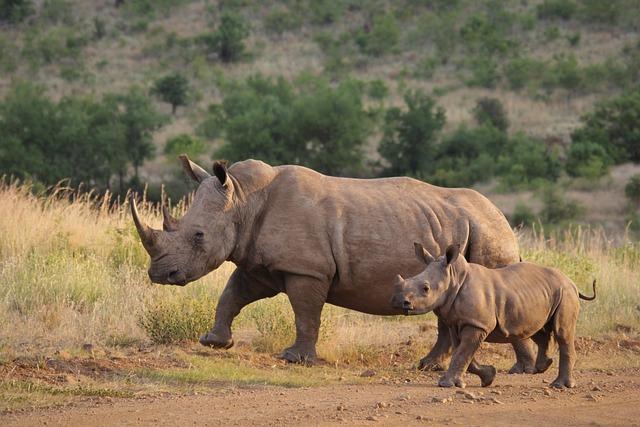- Introduction
- Javan Rhino Habitat and Distribution
- Physical Characteristics of the Javan Rhino
- Conservation Efforts and Threats
- Importance of the Javan Rhino to Ecosystems
- Conclusion
- FAQs
- References
Introduction
The Javan Rhino, one of the most endangered rhinoceros species in the world, is a topic of immense ecological importance. In this article, we will explore its unique habitat and distribution, delve into its fascinating physical characteristics, discuss ongoing conservation efforts and threats it faces, and analyze the critical role this species plays in maintaining ecosystem balance.
By the end, you'll have a comprehensive understanding of why protecting the Javan Rhino is essential for biodiversity. Let's embark on this journey to learn more about this remarkable animal.
Javan Rhino Habitat and Distribution
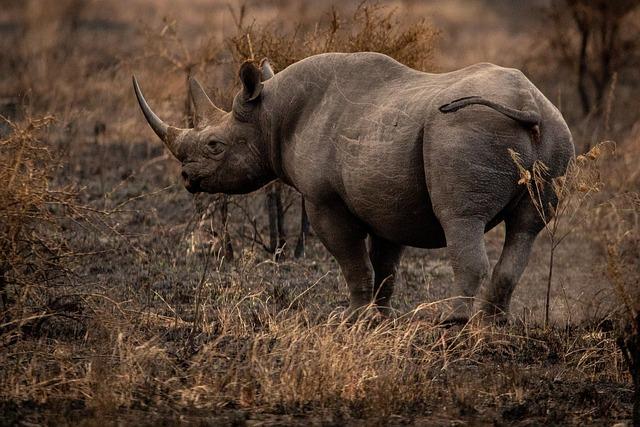
(Image: Pixabay/@patrickgregerson)
The Javan Rhino (Rhinoceros sondaicus) is predominantly found in the dense tropical rainforests of Ujung Kulon National Park in Indonesia. This park serves as the last stronghold for this critically endangered species, with their global population estimated to be fewer than 80 individuals. Once widespread across Southeast Asia, their range has dramatically shrunk due to habitat loss and poaching.
Ujung Kulon offers an ideal environment, with plenty of food from the lush vegetation, freshwater sources, and minimal human disturbance. However, challenges persist as their limited habitat makes them highly vulnerable to natural disasters like tsunamis or disease outbreaks.
Efforts to establish secondary habitats are underway to reduce the risk of extinction from being confined to a single location. Conservationists are optimistic that creating new suitable habitats can stabilize the species' population over time.
The scarcity of this magnificent animal highlights the urgency for greater ecological awareness and collaborative global conservation initiatives.
Physical Characteristics of the Javan Rhino
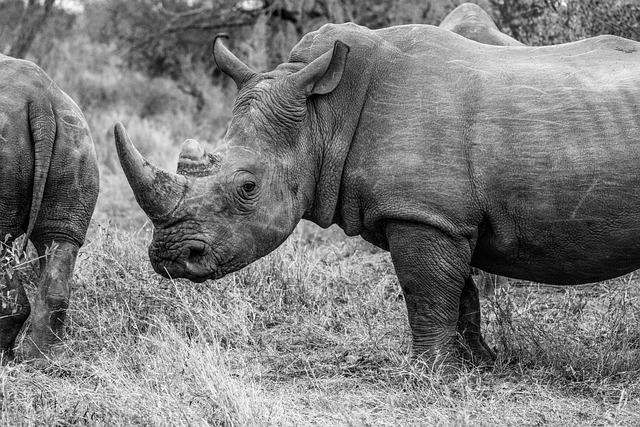
(Image: Pixabay/@butti_s)
The Javan Rhino is smaller and more elusive compared to other rhinoceros species. An adult typically weighs between 900 to 2,300 kilograms and stands about 1.4 to 1.7 meters tall at the shoulder. Its grayish-brown skin forms a mosaic pattern, resembling armor plates, providing an added layer of protection in dense forests.
Unlike its close relatives, the Indian Rhino, the Javan Rhino has a much smaller single horn, measuring roughly 25 centimeters. Interestingly, female Javan Rhinos often lack visible horns altogether. This adaptation possibly benefits them by navigating through thick forest vegetation more effectively.
Despite their robust build, Javan Rhinos are surprisingly agile and excellent swimmers, enabling them to cross rivers and marshy areas within their habitat. They are herbivores, consuming a diverse diet of leaves, shoots, and fruits, which contributes to their significant role as seed dispersers in their ecosystem.
Their shy and solitary nature makes studying them challenging, requiring sophisticated camera traps and non-invasive tracking to learn about their behavior and ecology without disrupting their fragile existence.
Conservation Efforts and Threats
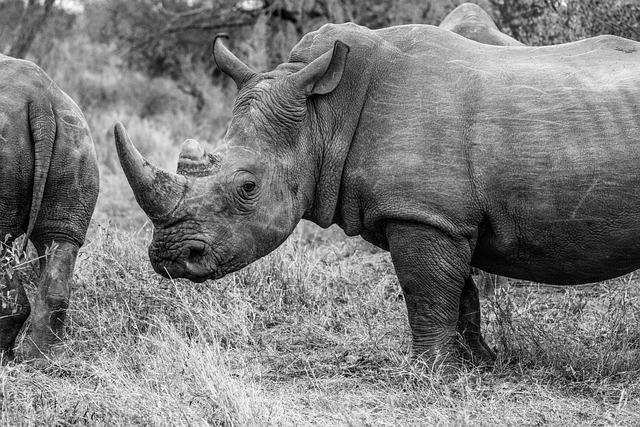
(Image: Pixabay/@butti_s)
Conserving the Javan Rhino has become an international priority given its critical status. Ujung Kulon National Park is heavily protected to minimize human disturbances, illegal wildlife trade, and poaching activities. Initiatives like anti-poaching patrols, habitat restoration programs, and public awareness campaigns have made some progress in safeguarding this species.
However, the Javan Rhino faces myriad threats. Habitat destruction from agriculture, logging, and infrastructure development continues to pressure their limited range. On top of this, natural events such as volcanic eruptions and tsunamis endemic to the region pose catastrophic risks.
Non-profits and governments worldwide are collaborating to increase funding and research for Javan Rhino conservation. Such projects include deploying advanced monitoring technologies, improving local communities' livelihoods to reduce dependency on forest resources, and exploring captive breeding as a last resort.
The fight to save the Javan Rhino is an uphill battle, but every success story reinforces hope that extinction can still be averted.
Importance of the Javan Rhino to Ecosystems
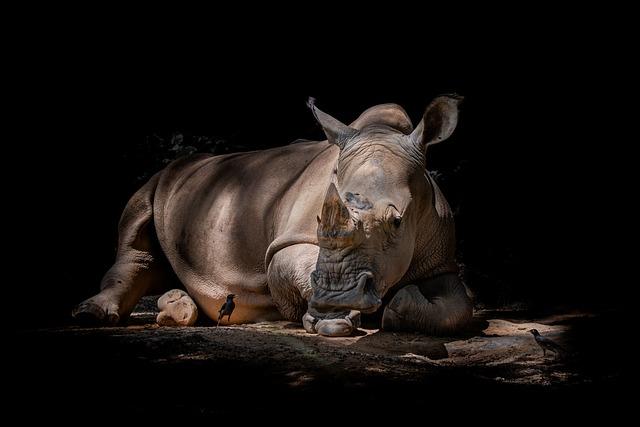
(Image: Pixabay/@Dannysee)
Javan Rhinos serve as keystone species within their ecosystem, meaning their presence has a disproportionate impact on the environment compared to other animals. By feeding on a wide variety of plants and spreading seeds through their dung, they help maintain the biodiversity of the tropical rainforest.
Furthermore, their foraging behavior facilitates the growth of certain plant species by promoting sunlight penetration to ground vegetation. Without them, the delicate balance of the ecosystem could collapse, adversely affecting numerous plant and animal species dependent on the habitat.
The rhino’s role extends to influencing water availability in their environment. By trampling small plants and clearing paths, they indirectly assist water runoff during rains, preventing excessive waterlogging in parts of the forest.
Protecting the Javan Rhino is not just about saving a singular animal; it’s about preserving entire ecosystems that many species, including humans, rely on for survival.
Conclusion
The Javan Rhino is both a symbol of the rich biodiversity of Southeast Asia and a stark reminder of the fragility of our planet's wildlife. From its dense tropical rainforest habitat to its critical role in maintaining ecosystems, the Javan Rhino deserves our unwavering attention and action.
Although its future hangs by a thread, global conservation efforts provide a glimmer of hope. Protecting this majestic creature ensures not only its survival but also safeguards the health of its environment for generations to come.
FAQs
Why is the Javan Rhino so endangered?
The primary reasons for the Javan Rhino's critical endangerment include habitat destruction, poaching, natural disasters, and its limited gene pool from a small population size.
Where can the Javan Rhino be found?
The Javan Rhino is currently confined to Ujung Kulon National Park on the western tip of Java, Indonesia.
What actions are being taken to protect the Javan Rhino?
Conservation efforts include habitat restoration, anti-poaching patrols, public awareness campaigns, and exploring potential new habitats to relocate part of the population.
What is unique about the Javan Rhino compared to other rhinoceros species?
The Javan Rhino has a smaller single horn, a more armored appearance due to its mosaic-like skin, and females often lack visible horns altogether.
How can I help with Javan Rhino conservation?
You can contribute by donating to wildlife organizations, spreading awareness, reducing your ecological footprint, or supporting policies that protect endangered species and their habitats.

